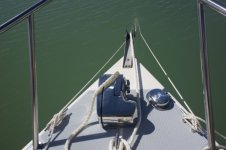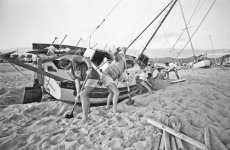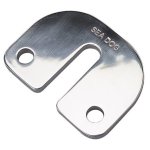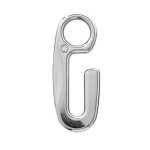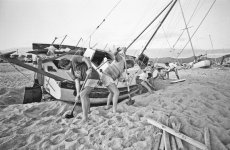Yosef
1988 22 Cruiser "Heron" Eastern Washington (state)
Hi Everybody,
I've had Heron out on a couple overnight trips to Lake Roosevelt (the one in WA state).
When anchoring I let out my delta anchor with 30' of chain then 1/2" 3-strand rope. I tie the rope off to the (center line, behind windlass) bow cleat and call it good.
Reading here about anchoring I'm getting the impression I should be securing an extra line from the bow hook (where I attach the trailer's winch) to the anchor rope (using a "rolling hitch") so the anchor is yanking on the bow hook instead of pulling through the (Lewmar 66840007) bow roller to the bow cleat?
I get the impression the reason for this is the bow roller isn't intended to take the strain of anchoring.
Are my impressions correct?
TIA
-Joe Dowd
I've had Heron out on a couple overnight trips to Lake Roosevelt (the one in WA state).
When anchoring I let out my delta anchor with 30' of chain then 1/2" 3-strand rope. I tie the rope off to the (center line, behind windlass) bow cleat and call it good.
Reading here about anchoring I'm getting the impression I should be securing an extra line from the bow hook (where I attach the trailer's winch) to the anchor rope (using a "rolling hitch") so the anchor is yanking on the bow hook instead of pulling through the (Lewmar 66840007) bow roller to the bow cleat?
I get the impression the reason for this is the bow roller isn't intended to take the strain of anchoring.
Are my impressions correct?
TIA
-Joe Dowd

